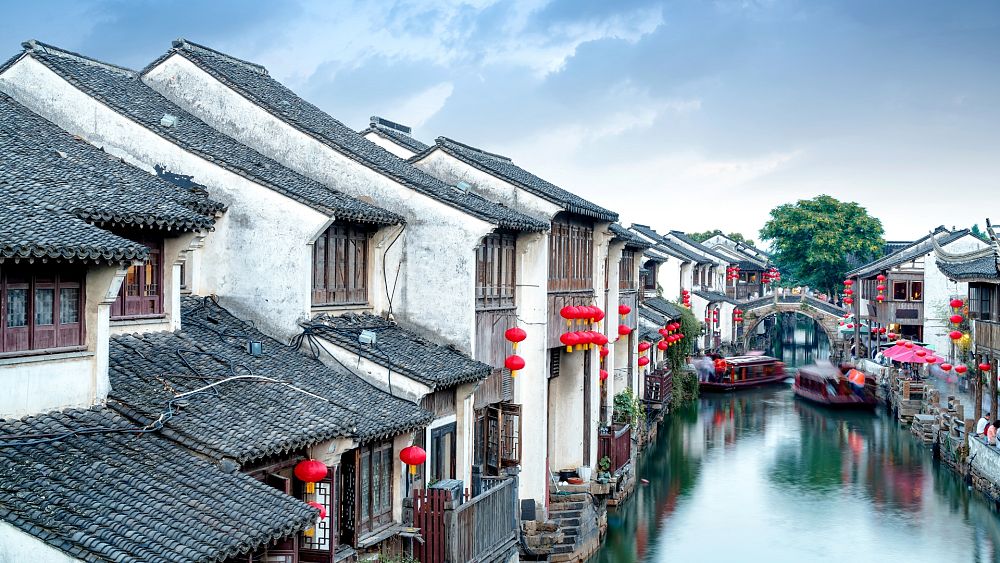Sitting just to the north of Shanghai on China’s east coast, Jiangsu province is celebrated for its ancient gardens, beautiful waterways and delicious cuisine.
Known as one of the birthplaces of Chinese civilisation, nowadays the region is one of the most prosperous in China, with thriving tech, commerce and textile industries and a population of around 80 million people.
“Jiangsu is really a sort of a Chinese microcosm. It has landscapes to offer, as well as large metropolitan areas such as Nanjing, Suzhou and Wuxi. Plus it has lots of beautiful landscapes, as well as a lot of different kinds of coastal areas, “ says Andy Janz, Director of Marketing & Digital Commerce at Gebeco.
“It's really kind of a microcosm in terms of what tourists can see.”
So whether you’re interested in learning about Chinese silk production, or want to explore the region’s elegant gardens and waterways - which have earned the city of Suzhou the nickname ‘Venice of the East’ - here are some of our top destinations.
When is China reopening to tourists?
After a lengthy three year lockdown, the Chinese government announced that it would begin issuing tourist visas again from 15 March. Travellers should be aware that it may take some time to get an appointment and for applications to be processed.
Travellers to China will need to take a COVID test within 48 hours of departure in order to enter the country, and all passengers will need to wear a mask on the plane.
What can I do in Suzhou?
Just over 90 kilometres from Shanghai, Suzhou is one of the oldest cities in the Yangtze Basin. Nowadays, the city is a thriving trade hub, but its ancient gardens still remain. To get a feel for this region’s traditional garden culture, make sure to visit The Humble Administrator’s Garden - the largest classical garden in Suzhou.
This UNESCO World Heritage Site is an impressive 52,000 square metres, and was constructed in 1509 during the Ming Dynasty - which has its roots in the neighbouring city of Nanjing.
“It's known as the Venice of the East, but not only does Jiangsu Province have a water culture, it also has a garden culture, such as we may know from Japan, but really this garden culture originated in this area,” explains Janz.
“Suzhou is very famous for its little gardens which have been cultivated for many, many thousands of years.”
One of Suzhou’s most famous areas is Shantang Street, home to a canalside path dating back 1,200 years. Take a stroll through the old city and you’ll find yourself at Tiger Hill, home to the Cloud Rock Pagoda. Built in the 10th century, the intricate brick pagoda has tilted under its own weight, and its summit is now two metres from its original position.
Back in the city, make sure to check out the Suzhou Silk Museum to learn more about Chinese silk culture, from the past to the present day.
What is there to do at Taihu Lake?
“Taihu Lake in Wuxi is also very, very beautiful and it’s the source of a lot of poetry in ancient China,” says Janz.
Surrounded by the cities of Suzhou, Wuxi, and Huzhou, Taihu Lake is the third largest freshwater lake in China. Dotted with islands and surrounded by lush hills and landscapes, the lake is a scenic spot to relax and unwind.
While you’re here, make sure to check out the temples and gardens that surround the lake, particularly Liyuan, a beautiful garden which sits on the northeastern edge of Li Lake, a smaller tributary of Taihu.
Where is the best place forJiangsu cuisine?
“China, generally speaking, has a very diverse cuisine. But also what many people don't know is that Chinese food is quite spicy,” explains Janz.
“So for tourists in Jiangsu province, it’s a little bit different, the food there is milder, there’s a lot of seafood. It’s sometimes a little bit sweeter, and the famous sweet and sour dishes that we know in the West, they originate in Jiangsu province.”
One of the eight culinary traditions of China, Jiangsu cuisine (also known as Su cuisine) is renowned for its elegant presentation, soft meats - especially duck - and a focus on the natural flavour of ingredients.
If you want to get to know the region’s dishes, one of your first stops should be the street food markets of Nanjing, including Lao Men Dong and Fuzimiao. Here you can try a range of local specialities, from duck blood noodle soup to egg dumplings.


